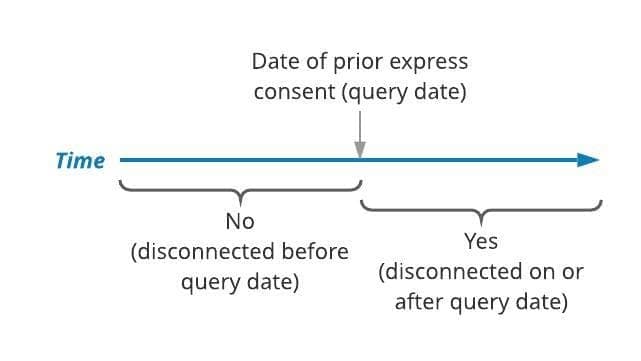FCC changes guidelines for Reassigned Numbers Database
The Reassigned Numbers Database (RND) went live on November 1, 2022. There’s been some confusion about using the RND. This is important, because the RMD response affects safe harbor eligibility for callers. The FCC has supplemented their guidance on the RND. Here’s what’s happening.
What the RND does
First, let’s quickly review what the RND is, and how it works.
Collect disconnection data
The RND is intended to be used by callers to check whether a telephone number has been permanently disconnected, and therefore potentially reassigned, before calling that number. This will reduce the number of unwanted calls made to reassigned phone numbers.
The first step is to have telephone number providers report permanent disconnections every month. This has already begun:
- Providers with more than 100,000 subscriber lines began reporting July 27, 2020.
- Providers with 100,000 or fewer subscriber lines began reporting January 27, 2021.
For each telephone number allocated or ported to the provider, they report the following:
- Telephone number
- Date of most recent permanent disconnection
Using the RND
A caller is required to check the RND before calling. Each RND query includes the following:
- Telephone number
- Consent date, which acts as a cutoff date. For example, this could be the most recent date when the caller last spoke with their customer or that the customer updated his or her contact information.
The RND provides one of the following three answers to each query:
- Yes. The telephone number has been permanently disconnected on or after the cutoff date provided.
- No. The telephone number is in the RND, but the most recent disconnection date is before the cutoff date provided.
- No data. This telephone number is not in the RND.
Figure 1 illustrates these responses on a timeline.

Figure 1: RND Query Logic
If the caller interacted with the called party on a consent date and the query response is No, then the most recent disconnection was before that date. It’s ok to call.
If the query response is Yes, then the number has been permanently disconnected after the last consent date. The caller should not call the person at that number.

Confusion over RND responses
Since the RND went live, callers have been receiving many No Data responses. This has caused some confusion, especially when the consent date is after January 27, 2021. Here’s why:
- All providers were supposed to be reporting permanent disconnections after January 27, 2021.
- A caller has a consent date after January 27, 2021.
- If there’s No Data and the consent date is after data collection began, then why isn’t it ok to call this person?
The FCC issued supplemental guidance to change the way the RND issues No and No Data responses, and to clarify how callers should interpret these responses.
Guidance
The following table explains the supplemental guidance.
| RND response | Criteria | Safe harbor eligible |
|---|---|---|
| Yes | The number is in the RND and the permanent disconnect date is on or after the consent date. | No |
| No | The number is in the RND and the permanent disconnect date is before the consent date, OR, the number is not in the RND and the consent date is on or after January 27, 2021. | Yes |
| No Data | The number is not in the database AND the consent date is before January 27, 2021. | No |
We’ve highlighted the changes in yellow.
The RND Administrator (SomosGov) has indicated that this change is technically feasible to make in a timely manner. See the FCC public notice for more details.
TransNexus solutions
We offer STIR/SHAKEN and robocall mitigation solutions in our ClearIP and NexOSS software platforms. We can make your STIR/SHAKEN deployment a smooth process.
We provide an STI-CPS, the TransNexus CPS, which is available to any SHAKEN-authorized service provider, free of charge, to use when they want to send or receive STI PASSporTs out of band.
Contact us today to learn more.
Our STIR/SHAKEN products:
- Work with your existing network
- Support SIP and TDM
- Affordable, easy to deploy